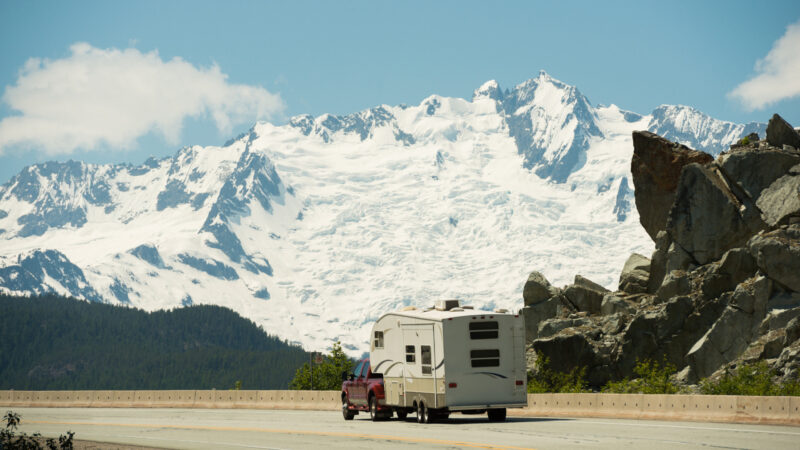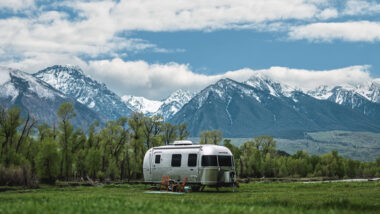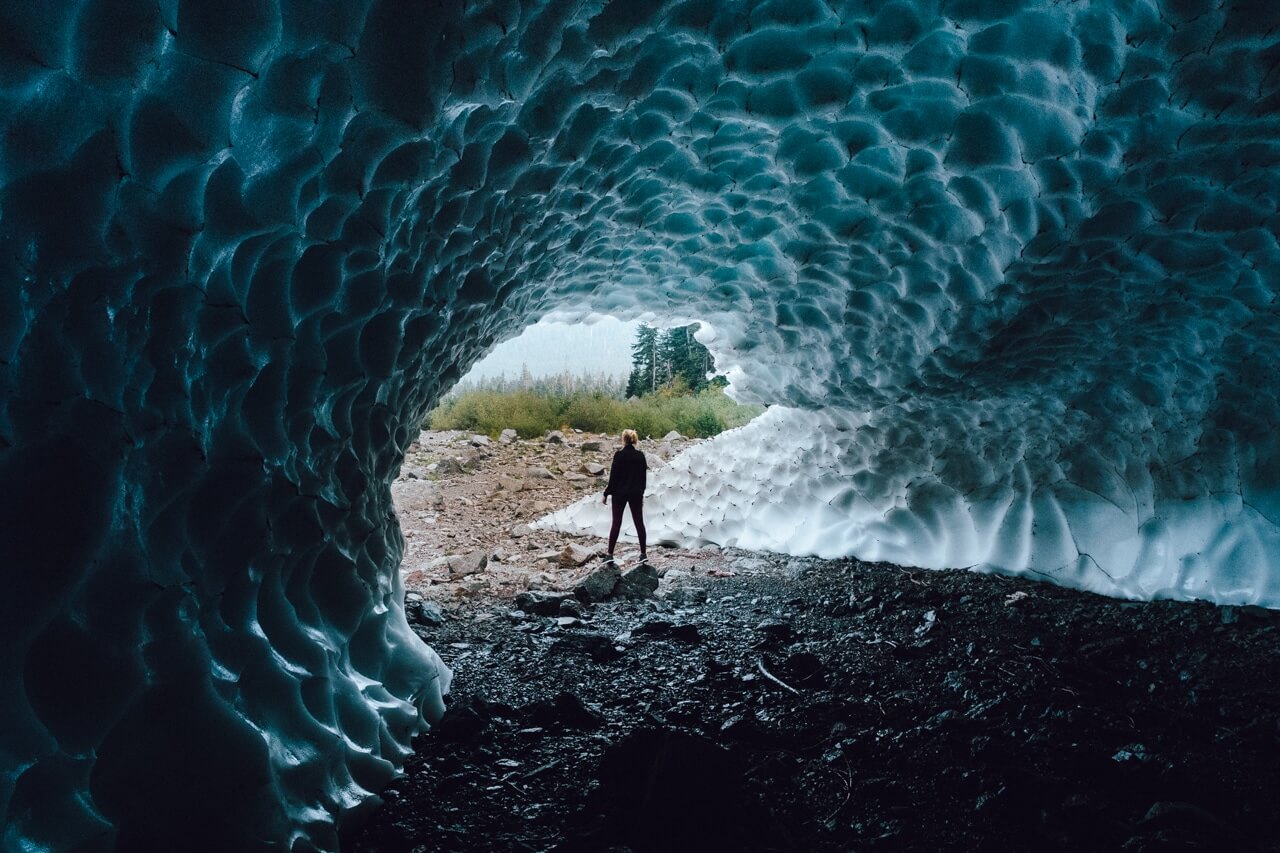Table of Contents Show
You’ve got to be resourceful to make it as an RVer. Being able to think outside of the box can be incredibly useful. Depending on where you’re traveling, you may not have access to the typical gear, tools, or other equipment.
Recently, we saw some fellow travelers show off their ability to be resourceful. They were in a tough spot and found a creative solution.
Today, we’re diving into how a couple winterized their rig in an unusual way. Let’s get started!
Who Is Teardrop Trailer Atlas?
Teardrop Trailer Atlas is the social media brand of two travelers, Peter and Erika. They travel the country with their corgi, Poppy, in their Nucamp Tab 320 S. They hit the road at the end of July 2019 and have been traveling ever since.
They’ve camped in national parks, on public lands, and just about anywhere they can get to in their camper. Their tiny home on wheels has enabled them to experience our country’s best landscapes.
In addition, they’ve been able to go on adventures like hiking Angel’s Landing, driving Going to the Sun Road, and hiking to Bridal Veil Falls.
They are most active on Instagram. Make sure you go check them out and give them a follow!
Why Did They Use Vodka to Winterize Their RV?
When Peter and Erika were traveling through Sheridan, Wyoming, Mother Nature wasn’t cooperating.
A significant snowstorm was forecasted, and temperatures were about to plummet. As a result, the couple needed to do all they could to protect their camper from potential damage.
The couple used their creative brains to think of an ingenious solution. They discovered they could purchase extremely cheap vodka at a local liquor store. So why not use vodka to winterize their trailer? It doesn’t freeze until -16 degrees Fahrenheit and is readily available.
They went on to spend around $40 on several gallons of cheap vodka. They dumped it into their fresh water tank and sink and shower drains. Guess what? It worked! They and their camper survived the snowstorm with no damage.
The couple shared a reel on Instagram about the entire experience. Unsurprisingly, it created quite a stir in the community. It’s racked up over nine million views, 280,000 likes, and 1,800 comments.
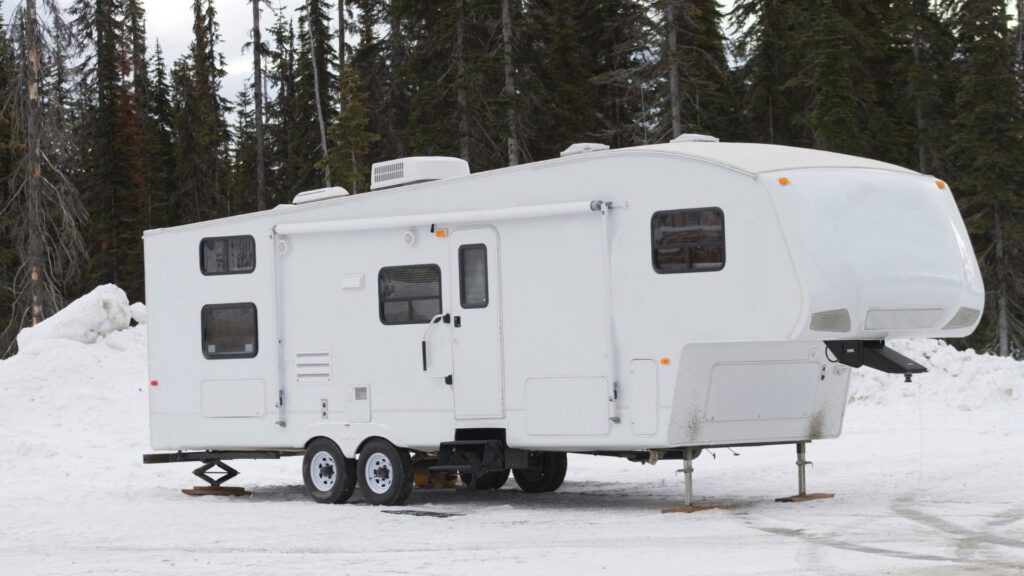
Do You Have to Winterize Your RV?
Winterizing is an essential maintenance task for many owners. The plumbing systems in campers are susceptible to freezing temperatures.
Because water expands as it freezes, frigid temperatures can cause lines to burst and plumbing connections to weaken. This can result in leaks and damage.
If your rig will sit in storage in an area that experiences freezing temperatures, it’s a good idea to winterize it. However, some can handle the cold better than others. Those with tank heaters, ducted heat near the pipes, and increased insulation are better prepared.
If you’re actively using your camper, you may not need to worry about winterizing it. If you’re inside your rig, you’ll likely have the heat running to stay warm. Using the furnace can help pump heat evenly throughout the space.
Some places rarely experience sub-freezing temperatures. As a result, you won’t have to worry about winterizing your RV.
How to Winterize Your RV
The process for winterizing an RV is relatively simple. However, each camper is different, and the exact steps can vary. When in doubt, check your owner’s manual for specific instructions.
Gather Supplies
The first thing you want to do is gather your supplies. This only required a quick trip into a liquor store for Peter and Erika. However, most owners use RV antifreeze, which is typically pink in color and non-toxic. It’s readily available online and at Walmart and other major retailers.
Depending on your camper, you may need a few more supplies. Things like a siphon hose or funnel may be necessary. We recommend planning for these events, so you have most of the supplies on hand. This can help you avoid a stressful situation trying to track down the equipment.
Drain Water Systems
Once you’ve got the supplies, you should drain all the water systems. You don’t want water in the lines, faucets, or tanks. Most fresh tanks have a valve that you can open to drain them quickly.
However, if you have black and gray tanks, find a dump station to dispose of the liquids properly.
Turn on your water pump and let it pump any excess liquids out of the lines. You’ll notice the pressure will quickly drop. Don’t worry if droplets are still in the lines; we’ll take care of them later.
Pro Tip: So how do you dewinterize your RV? Take a look at our guide to Dewinterizing an RV!
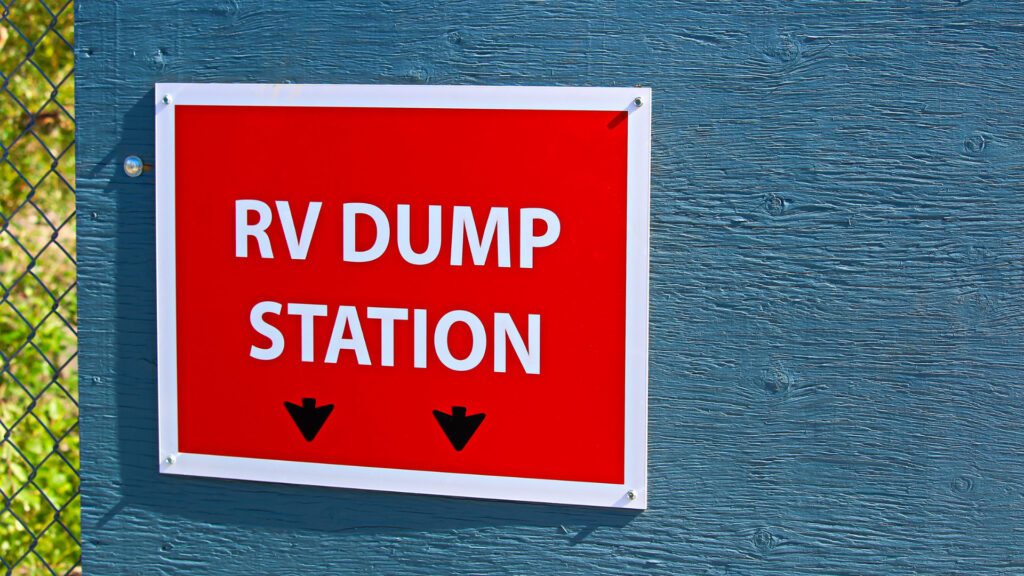
Bypass Water Heater
Water heaters on most campers can hold several gallons. If you do not bypass it, you must invest in several more gallons of antifreeze.
How to bypass the water heater varies considerably from one system to the next. However, stickers are usually on lines running to the equipment. These often show how to position the knobs for a variety of scenarios.
As we stated earlier, check the owner’s manual for any clarification. This is one project you want to make sure you get right. It’s worth a page of reading or at least a quick Google search.
Drain Water Heater
With the water heater bypassed, it’s time to drain it. To do this, you’ll want to turn off the power to the equipment and let it sit for a couple of hours. This gives the contents of the tank time to cool down so you don’t get burned.
Next, pull on the pressure relief valve. Because of the pressure release, there’s a good chance some water will come out during the process. It shouldn’t be much, but keep your distance to avoid getting wet.
The next step is to grab the appropriate socket to remove the anode rod. It’s usually a 1-1/16″ socket, but it could be slightly different on your rig.
Loosen the plug and prepare for water to come gushing out once you remove it. You’ll likely flood the area depending on how much is in your tank.
Add Antifreeze to Plumbing System
Now comes the time to start adding antifreeze to your plumbing system. Peter and Erika had to dump it directly into their tank.
Systems with a siphon feature can use a pump and a siphon hose to transfer the antifreeze from the jug throughout the system.
Keep in Mind: So What Is Different About RV Antifreeze? Click the link to find out!
Flush Toilets and Drains
Run every faucet, shower head, and toilet until you see the distinct pink color of the antifreeze. This lets you know it has traveled from the jug throughout your system.
Don’t forget outdoor showers or any other connections that could get damaged from freezing temperatures.
It’s also a good idea to dump some antifreeze down the drains in your plumbing system too. This helps to protect the various traps throughout the system that need protection.
You can never be too careful when protecting your plumbing system.
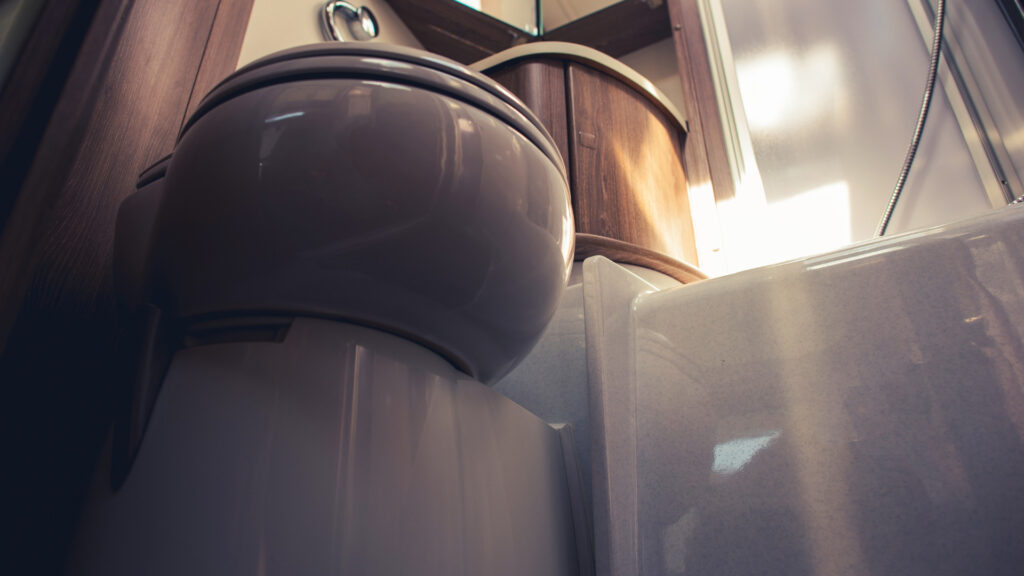
Should You Use Vodka to Winterize Your RV?
While Peter and Erika used vodka to winterize their RV, it’s likely not the best option. For starters, even though the vodka was inexpensive, it was still more expensive than RV antifreeze. You can typically find the appropriate materials for less than $5 per gallon at most retailers.
There are also some potential legal issues with hauling large amounts of alcohol, especially across state lines. Many commenters questioned whether or not the couple was risking a citation.
While alcohol was an innovative way to protect your coach, we recommend having a couple of gallons of antifreeze on hand, especially during the winter.
Mother Nature can be moody and unpredictable. Temperatures can drop quickly, and you want to avoid getting caught off guard!
Last update on 2025-01-19 / Affiliate links / Images from Amazon Product Advertising API




